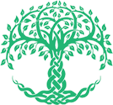Quick Search
EVALUATION OF THE MAMMOGRAPHY RESULTS AND BREAST CANCER ASSESSMENT
Sibel Baktır Altuntaş1, Dilek Toprak2, Bülent Altuntaş11Central Family Medicine Center, Esenyurt, Istanbul, Turkey2Namık Kemal University,Dept. Of Family Medicine, Tekirdağ, Turkey
Objective: Breast cancer is number one cause of death in women and responsiblefor almost 7.4 million deaths. The aim of this study was to determine the controversial and unconvertible risk factors related to life style, that take place in developing breast cancer; and also to evaluate effects of these risk factors on developing breast cancer, together with mammography results, which is an early diagnostic method for breast cancer.
Methods: A total of 375 women who accepted to join the questionnaire were included into the study. Questions intended to measure the knowledge levels on the early diagnostic methods of breast cancer, and oriented at sociodemographical features, were asked to the participants together with the form recommended by the Ministry of Health. Body mass indexes (BMIs) were estimated by measuring height and weight.
According to the risk assessment form for breast cancer it was estimated as:
≥400 the highest risk
301-400 high risk
201-300 medium risk
≤200 low risk.
Means, frequency, t-test and chi-square test were used for analysis and level of significance was accepted as p<0.05.
Results: Mean age of the women participated in the study was 50.,23±7.07 (min-max= 40-69 years).Most of them (53.1%; n=199) were between 40 to 50 years old, graduates of primary school (56.8%; n=213) andhousewives (77.3%; n=290). Of the women, 17.1% was smoker (n=64) and the rate of ones never doing exercisewas 60% (n=225). It was determined that 25 (6.7%) women had their first menstruation ≤11 years of age and 124 (33.1%) had >15. Sixteen (4.3%) had a baby after 30 years of age. Of the women who had children, 24 (6.4%) had never breastfed a baby.50.7% of the women (n=190) were already in menopause and 20 (5.3%) of them were having HRT (Hormon Replacement Treatment), with a mean HRT time of 3.85 months.
Thirteen women (3.5%) had their first degree relatives with breast cancer history, 159 (4%) had a breast cancer history among their second degree relatives and 5 (1.3%) had their own history of breast cancer. Six (1.6%) women was determined with a very high MRP (Mean Risk Point), 29(7.7%) with a medium point and ve 340 (90.7%) with a low point.Malignity was determined in a low risk woman.
Of the women who knew BSE (Breast Self-Examination), 25.6% (n=96) had learned it fromfamily physicians; 13.1% (n=49) from general surgeonsand/or gynecologists and the other 71% (n=71) from TV. Two hundred and nine (55.7%) women had previously gone through testing for breast cancerand 182 of them (48.5%) had a mammography test. From 28 participants who had cancer in the family, 39.3% (n=11) had no information about BSE and they did not know how to do it.
Manuscript Language: English




















